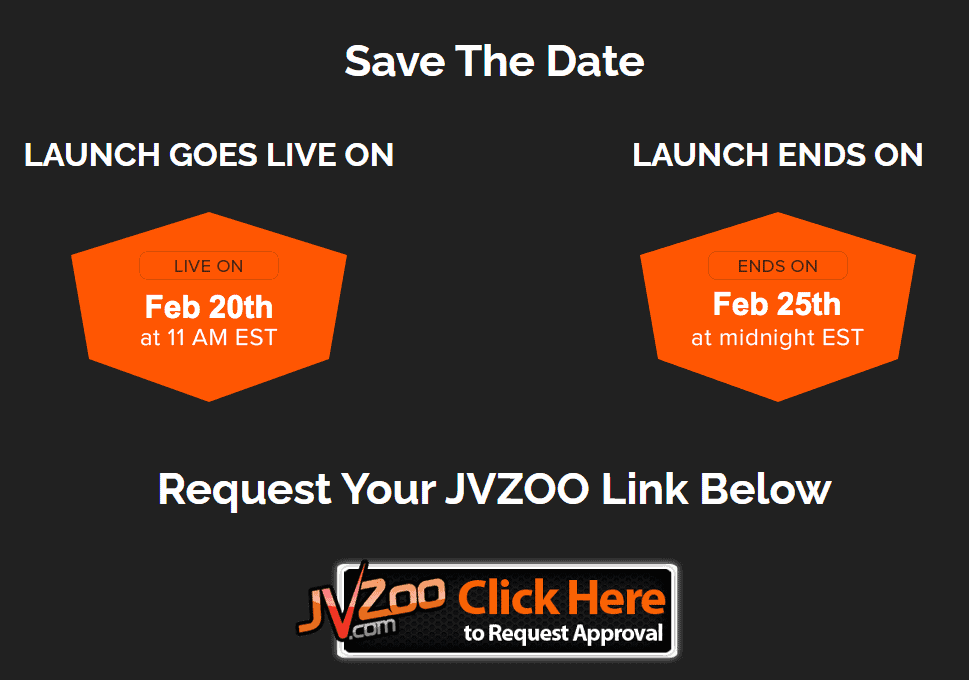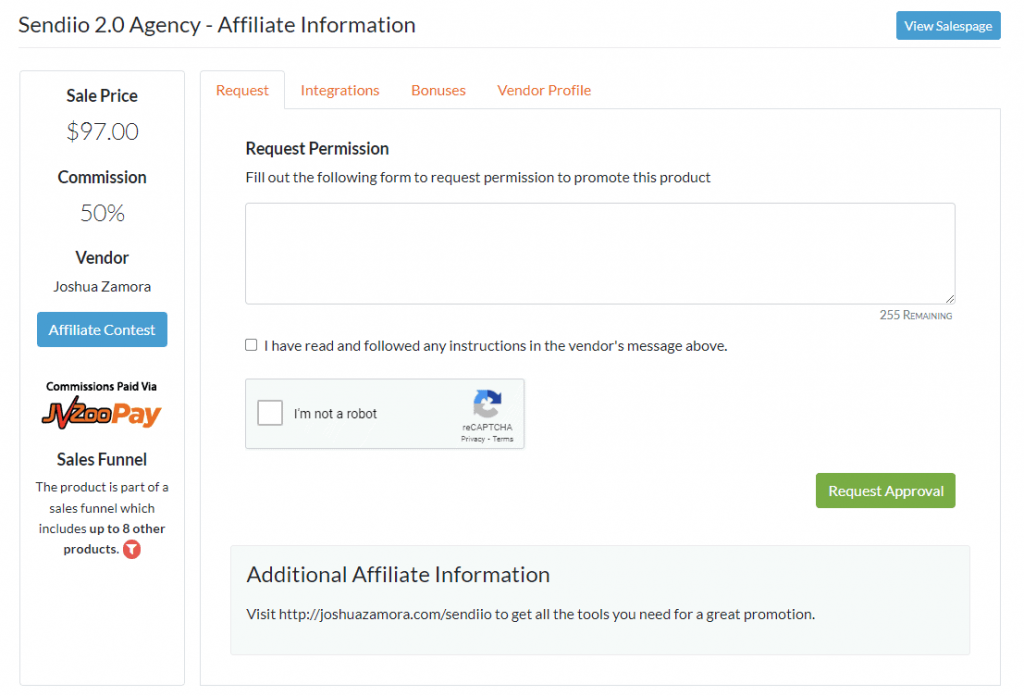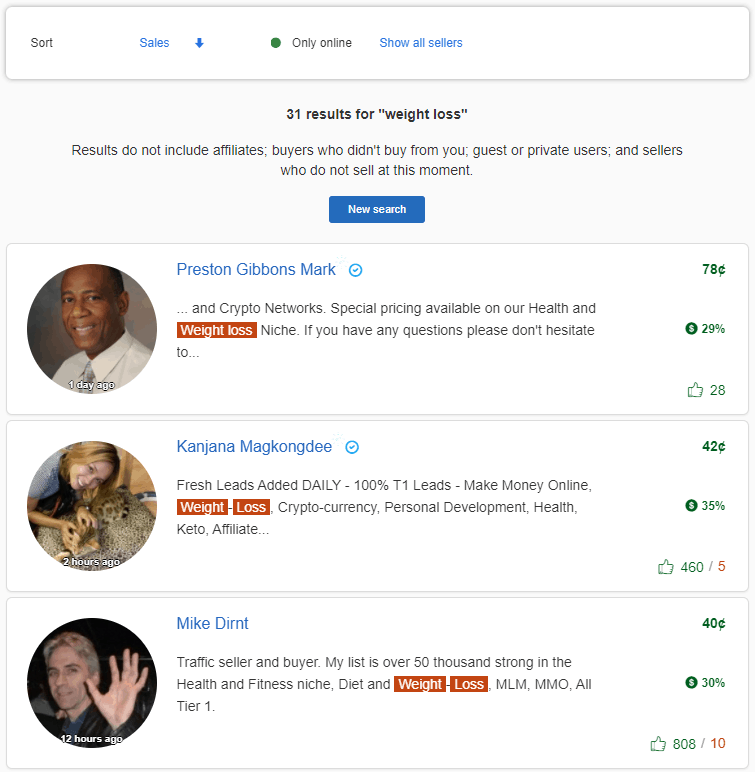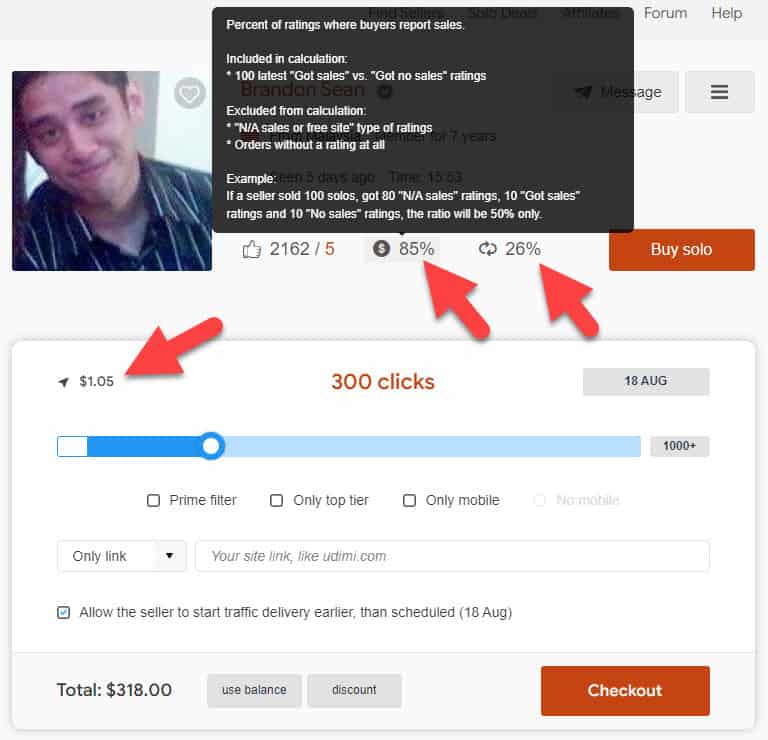One of the best ways to utilize a pricing structure to increase sales on a digital or a physical product is to use “scarcity” by limiting the quantity or increasing the price. Dimesale and Timesale are two prominent pricing strategies marketers have used over the years to increase sales.
In this article, you will understand Dimesale and Timesale pricing models, how to find those offers, and how to make money as an affiliate marketer.
What is Dimesale?
In the Dimesale pricing strategy, the price of the offer increases after every sale.
The price increase could be a set amount (ex: $1 after every sale) or a percentage (ex: 10% increase after every sale), and there could be a cap. Ex: Price increases by $2 for every sale until $297
So, the quicker a person purchases the product, he/she saves money. It makes the feeling good to buy faster than others.
What is Timesale?
In the Timesale pricing strategy, the offer’s price increases by a set amount or a percentage after a certain period.
Unlike in Dimesale, in Timesale, people have time to think about the offer and buy before the price increases.
Dimesale and Timesale in affiliate marketing
Dimesale and Timesale are two popular pricing strategies used especially in digital product launches, particularly in Internet marketing and Business Opportunities niches.
Affiliate networks like JVZoo, WarriorPlus, ThriveCart, and ClickBank (to some extent) have filled with tons of launches with timesale and dimesale affiliate offers.
Here is a WordPress plugin launch offer on the WarriorPlus network that uses the Dimesale on front-end (FE) offer and one One-time-offer (OTO).

As you can see, the product’s FE has three pricing tiers. Their prices increase gradually as people purchase.
- Single License – Price bumps from $9.97 to $14.97
- Multi License – Price bumps from $17 to $21.97
- All Unlimited Domains License – Price bumps from $27 to $34.97
Similarly, you would find several Timesale offers on product launch calendars like Muncheye or affiliate networks.

Dimesale vs Timesale: Which pricing strategy is more popular?
By comparing the number of offers that use Dimesale and Timesale pricing strategy, it is apparent that Dimesale is the one that is performing very well for product owners.
It is obvious because Dimesale actually triggers the urgency to buy before the price increases and spending more. In comparison, in Timesale, people have a choice of spending time to decide. Thus, less urgency. But, in Dimesale, people are in a hurry because of always thinking of saving money.
How to promote Timesale and Dimesale Affiliate Offers and Make Money
Dimesale and Timesale affiliate offers can be seen in two product categories:
- Evergreen affiliate offers
- Product launches
Certain types of offers can utilize Dimesale or Timesale pricing strategies. In those cases, product owners use it to convert more visitors into buyers of their evergreen products. Product niches that Dimesale and Timesale pricing strategies work well are software, SaaS products, and membership courses.
Another type of offer is product launches with real hype and urgency. Usually, in a product launch, there are two phases.

- Prelaunch
- Launch
In the Prelaunch period, visitors are warmed up and hyped about the offer. The launch period is where Dimesale or Timesale pricing changes happen.
During the Cart Open and Cart Close period, the price might increase based on the timesale or dimesale method to generate maximum conversions.
Where to find affiliate offers
There is no specific place to find timesale and dimesale affiliate offers. However, since most of those are product launches, you can find them on an internet marketing product launch calendar like MunchEye.

Muncheye is an IM product launch directory where you can find upcoming affiliate product launches. Learn more in this MunchEye review.

Here are several Muncheye alternatives if you want more resources to find product launches. Check out this guide on How to make money on Muncheye affiliate programs to learn how to promote upcoming affiliate product launches and earn money.
Ways to promote Dimesale and Timesale affiliate offers
Since dimesale and timesale affiliate offers are mostly product launches, you have to drive targeted and warmed-up traffic. Here are four methods:
- Your email list
- Solo ads
- Your blog
- PPC ads
Your Email List
Marketing to your email list is one of the easiest and quickest ways to make money by promoting timesale and dimesale affiliate products. Why?
Because:
-
Emails are a direct communication method – Unlike social media ads, you talk to your reader directly.
-
Instantly reachable – Another huge advantage of email list marketing to promote dimesale and timesale offers is the ability to reach your audience anytime you want. If the price increases at midnight, schedule an email to be sent 30 minutes before midnight. Flexibility like that cannot be found on any marketing channels.
-
People buy from emails – There is a reason why marketers still prefer email marketing. It gives them results. Studies have shown that customers would like to buy from their promotional emails.
What if you do not have an email list?
Start building your email list now!
Since not all email marketing services are affiliate-marketing-friendly, you have to choose a reputable and affiliates-friendly service like Aweber.

Aweber has operated since 1998 (one of the oldest services in the world) and its features like Drag-and-drop email builder, forms builder, split testing, and omnipresent integrations make it also the most convenient platform to use.

Click here to get your Aweber account for free.
Promote affiliate offers via email marketing
You can get ready for the affiliate launch prior. On most JV details pages, there will be a link to request affiliate links. If there is not, contact the affiliate manager.

Request the affiliate approval from the affiliate network.

Once approved, create a set of emails to be scheduled at the right time. Here are a few tips:
-
Utilize every little opportunity to reach your audience – For example, If the cart is extended, inform about it through a dedicated email broadcast.
-
Shorten affiliate links – Do not share JVzoo or Warriorplus affiliate links as you get them because some ESP (Email Service Providers) block them. So, use link shortening services like ClickMagick, Replug.io, or PixelMe.me. Even better, use a quality affiliate link tracker to monitor progress (ROI, EPC, AOV, etc.) in real-time.
-
Use bonuses to boost affiliate sales – Your subscribers might have probably subscribed to other affiliate marketers’ lists like yours. So, give away prizes instead of purchasing products from your affiliate links. People do not care from whom links they purchase as long as there’s an incentive. So, make it happen. You can use create bonuses by yourself or purchase Done-for-you PLR products with giveaway rights from top PLR websites like IDPLR or PLR.me.
-
Retarget via social networks – Not all people who visit a page purchase something in the first place. So, you have to make them visit multiple times to educate them more. Retarget people on social networks like Facebook. You can use a tool like Integrately (read the review on Integrately) to create retargeting audience or a link shortening service like Replug to fire JavaScript before someone lands on the destination page.
I also recommend using sales-boosting factors like animated email countdown clocks and proven promotional offer subject lines and emojis.
Email solo ads
Solo advertisements are email broadcasts sent to other people’s email lists to promote your link. Since solo ads are based on emails, a direct communication method, solo ad traffic is also a great way to drive targeted traffic. Learn more in this Solo Ads 101 tutorial.
Among numerous buyer solo ad traffic sources, still, Udimi is the best site to buy solo ads.

Udimi.com is a solo ads marketplace filled with many sellers and buyers. It’s like Fiverr for solo advertising. The average click cost starts from 5 cents ($0.05), and there are many sellers to choose from. Learn more in this review on Udimi.

Here are a few tips to promote affiliate offers via Udimi.
-
Buy from an established seller – Reputable and professional sellers on Udimi have the experience. If you are getting started, buy from a seller with a proven track record. Check this Massive Solo Ads Rolodex for statistics.
-
Cheap is not always the perfect option – You might be tempted to buy cheap solo ads from some sellers. But quality clicks cost money. People with a buyers list ask for more money per click.
-
Traffic tiers matter more than you think – The traffic tier is essential in solo advertising (and paid advertising in general). The traffic tier is where the traffic originated from. Some countries have a higher GDP per capita, and English is the common language. Also, there are regions in the world with lower digital literacy and GDP per capita, and you want to avoid traffic from those places. Top tier traffic or Tier-1 countries like the US, UK, CAN, AUS, and NZ are regarded as the best countries to get traffic from. Filter “Only Top tier” on Udimi to get traffic from tier-1 countries.
-
Use a bridge page if possible – A bridge page is an intermediatory page between your link and the sales page. Two purposes of the bridge page are educating the visitor and creating a micro commitment moment so that prospect is further committed to taking action on the sales page. Use a landing page builder like Clickfunnels and Brizy to create bridge pages.
-
Ensure you selected appropriate dates – The last thing you want is to send traffic after the cart closes. So, make sure to check the timing of solo ad traffic and affiliate product launches. Use a timezone converter like Timeanddate if required.
-
Decide if you want to build your list and promote affiliate offers or promote affiliate offers only – Solo advertising is a great traffic medium to build your email list. If you want to build the list while promoting Timesale and Dimesale affiliate offers, there will be more variables (ex: squeeze page) to be optimized. Both have pros and cons. So decide which path you’d like to choose. Here is a complete guide to using solo ads to promote affiliate offers that cover both methods.
Related: How to use Udimi to buy email solo ads – Beginner’s Guide
Your blog
If you already have a blog with a reasonable amount of targeted traffic, you can promote dimesale or timesale affiliate offers.

Here are a few tips:
-
Display an attention-grabbing banner on your sidebar
-
Utilize notification bars and callout modals to make apparent CTAs (Call-to-actions)
-
Use methods like Launch Jacking to promote the affiliate offer strategically using content marketing and SEO (Search Engine Optimization).
-
Make use of conversion boosters like progress bars, curved arrows, countdown clocks on web pages, or even count up timers.
-
Highlight top features and comparisons of the product or service. Use Affilitable to generate widgets. Also, utilize testimonial slider widgets to showcase reviews.
ConvertBox lets you create attention-grabbing CTA widgets easily with their drag-and-drop builder. Learn more about ConvertBox.

ConvertBox is currently on a lifetime pricing. Get your account over here and read this article on the ConvertBox Lifetime deal to find more details.
PPC Ads
In general, a product launch lasts for 5 – 7 days. But, you will find some offers with different time frames. Typically, most people who visit the sales page will not purchase anything during those times. What they will do instead is research on the Internet.
You can run ads on Google for targeted keywords during the product launch period and get targeted traffic. Here are a few tips:
-
Keyword selection is key – Use product keyword pairing such as “Product Name” + review, “Product Name” + deal, “Product Name” + discount to display your ad to targeted people. Get keyword data from tools like Semrush. Check this Semrush review to learn more. Semrush PLA research and Semrush Keyword Magic will be handy tools for PPC keyword research.
-
Bid to take the top position – According to many reports, top placement on SERP (Search Engine Result Page) gets the highest percentage of traffic. Ranking in the #1 place will get you the most traffic.
-
Create a bridge page that loads quickly and is focused on getting the most clicks – People do not like slowly loading sites. Amazon found some time ago that they lose billions for each one-second delay. The last thing you want is to load your site after a visitor loses his/her patient.
-
Qualify traffic on the ad copy – Do not use words like “free” in your ad text unless you want more clicks, not sales.
Final words on Dimesale and Timesale in Affiliate marketing
Dimesale and Timesale are pricing strategies that can usually find on product launches. If you are an affiliate marketer, now you know what they are, how to find timesale and dimesale affiliate offers, and how to promote them.
Because of the lower duration of the promotion, you should have known ways to drive targeted traffic exactly at the right time. Your email list, solo ads, blog, and targeted PPC ads are some of them. But also, you can use other traffic generation methods like Social media ads, Native ads, and Push notification ads.
Also read: Launch Jacking: A Super Easy Way to Make Money Promoting Upcoming Affiliate Product Launches
So, how are you promoting dimesale affiliate offers? Share your thought in the comments below.
